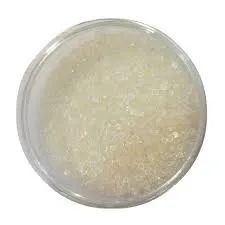Chemical Treatment of Drinking Water Ensuring Safe and Clean Supplies
Access to clean and safe drinking water is a fundamental human right and essential for public health. However, the natural sources of water, such as rivers, lakes, and groundwater, often contain various contaminants, which can pose significant health risks to populations. To address these challenges, chemical treatment of drinking water has become a vital process in water purification systems across the globe. This article explores the importance, methods, and effectiveness of chemical treatment in ensuring that drinking water meets safety standards.
Overview of Chemical Treatment
Chemical treatment involves the addition of specific chemicals to water sources to remove impurities, pathogens, and undesirable substances. This process can significantly enhance the quality of water by making it safe for consumption. The main goals of chemical treatment are to disinfect the water, remove sediments and particles, neutralize harmful contaminants, and improve the taste and odor of the water.
Common Chemicals Used in Treatment
1. Chlorine and Chloramine Chlorine is one of the most widely used disinfectants in water treatment. It effectively kills bacteria, viruses, and protozoa, making it crucial for ensuring the microbiological safety of drinking water. Chloramine, a compound formed when ammonia is added to chlorine, is also used as it remains in the water longer, providing extended disinfection.
2. Coagulants Substances like aluminum sulfate (alum) and ferric chloride are added to facilitate coagulation, where tiny particles clump together to form larger aggregates, or flocs. This process helps in the removal of suspended solids and turbidity from the water.
3. pH Adjusters Chemicals such as lime or sodium hydroxide are used to adjust the pH levels of water. Maintaining an optimal pH range is crucial for effective disinfection and the prevention of corrosion within distribution systems.
4. Activated Carbon This chemical treatment method utilizes activated carbon to adsorb organic compounds, taste and odor compounds, and certain chemicals, improving the overall quality of drinking water.
5. Ozone Ozone is another powerful oxidant that can disinfect water more effectively than chlorine and does not leave harmful residues. However, it requires careful handling due to its highly reactive nature.
chemical treatment of drinking water

Advantages of Chemical Treatment
1. Enhanced Disinfection Chemical treatment is highly effective in eliminating pathogens and preventing waterborne diseases, which are critical for protecting public health.
2. Cost-Effectiveness Compared to some advanced filtration and treatment methods, chemical treatments are generally cost-effective, making them accessible for many communities, especially in developing countries.
3. Scalability Chemical treatments can be scaled up or down easily, allowing for flexibility in addressing varying levels of contamination in different water sources.
4. Improved Water Quality Beyond disinfection, chemical treatments improve water aesthetics by removing unpleasant tastes and odors, making drinking water more palatable.
Challenges and Considerations
While chemical treatment has numerous benefits, it is essential to consider potential challenges. The use of chemicals must be carefully monitored to prevent the formation of harmful by-products, such as trihalomethanes, which can arise from chlorine disinfection. Additionally, over-reliance on chemical treatments may overlook the importance of source water management and natural filtration systems.
Conclusion
Chemical treatment of drinking water is an indispensable component of modern water supply systems. By effectively removing contaminants and ensuring the microbiological safety of water, these methods play a crucial role in safeguarding public health. As populations continue to grow and environmental challenges escalate, it is imperative for water treatment facilities to adopt optimized chemical treatment processes while balancing safety and sustainability. Continued research and development in this field will be vital to ensuring that clean and safe drinking water remains accessible to all.

